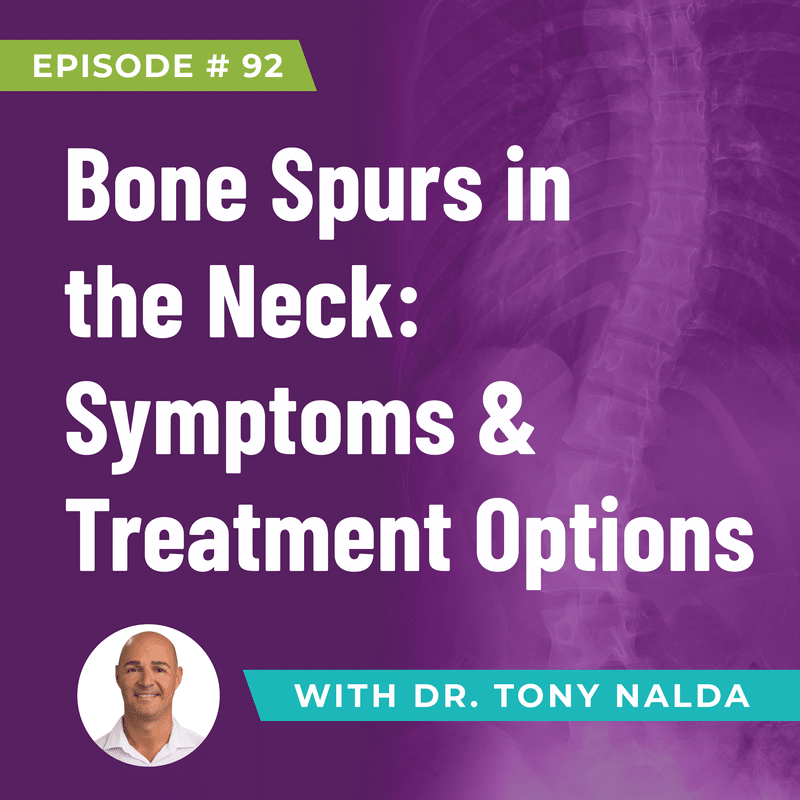Episode 92: Bone Spurs in the Neck: Symptoms & Treatment Options
When neck symptoms like pain, discomfort, or numbness in the arms arise, diagnostic tests often reveal the presence of bone spurs.
Understanding Bone Spurs
Bone spurs, or osteophytes, are bony growths that form to protect bone edges. Contrary to their name, they don't have sharp edges and often develop at joints where two bones meet. In the spine, they commonly occur in the neck and lumbar regions, occasionally in the thoracic spine.
The neck, particularly around C5C6 and C7, is a common area for bone spurs. These spurs tend to form in response to abnormal weight bearing, often stemming from misalignment, damage, or inflammation in the spine.
Causes, Triggers, and Symptoms
Bones constantly renew, with osteoclasts breaking down old bone and osteoblasts building new bone. Misalignment, damage, or inflammation can stimulate osteoblasts, leading to the formation of bone spurs. Osteoarthritis, linked to uneven wear in joints, is a common trigger for bone spurs.
Bone spurs themselves are often asymptomatic. Pain arises when spurs press on nerves, causing neck pain, tingling, numbness, and weakness. The most affected areas are typically between C5C6 and C7.
- Lifestyle Adjustments
- Activity Modification: Alter activities exacerbating symptoms.
- Rest: Reducing inflammation and stress on affected areas.
- Ice/Heat Therapy: Alleviates pain and reduces inflammation.
- Physical Therapy
- Strengthening Exercises: Enhances neck muscles and maintains range of motion.
- Chiropractic Care
- Spinal Adjustments and Techniques: Addresses misalignments and supports osteoblastic activity and techniques to realign the spine and reduce neurological symptoms.
Understanding bone spurs in the neck provides a pathway to effective management. If you or your loved one is experiencing neurological symptoms related to bone spurs listen to Dr. Tony Nalda’s podcast to know more.
Artlist.io 847544
Podcast: Play in new window | Download
Subscribe: RSS
Dr. Tony Nalda
DOCTOR OF CHIROPRACTIC
After receiving an undergraduate degree in psychology and his Doctorate of Chiropractic from Life University, Dr. Nalda settled in Celebration, Florida and proceeded to build one of Central Florida’s most successful chiropractic clinics.
His experience with patients suffering from scoliosis, and the confusion and frustration they faced, led him to seek a specialty in scoliosis care. In 2006 he completed his Intensive Care Certification from CLEAR Institute, a leading scoliosis educational and certification center.
About Dr. Tony Nalda
 Ready to explore scoliosis treatment? Contact Us Now
Ready to explore scoliosis treatment? Contact Us Now








